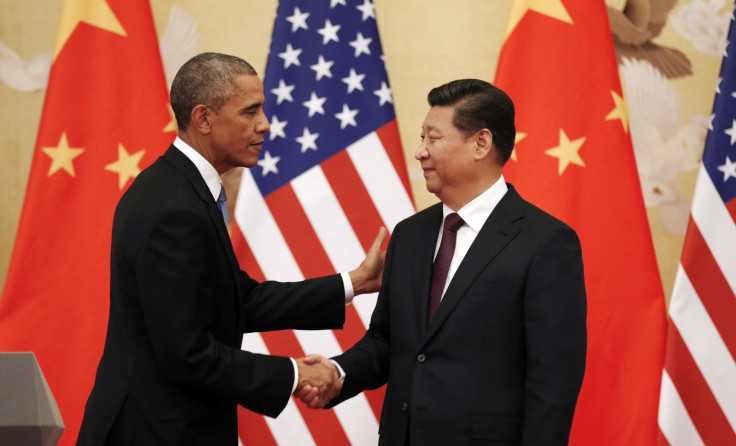US-China Climate Change Promises Aren't Ambitious Enough To Stop Global Warming, But Could Spark Progress

New U.S. and Chinese commitments to limit greenhouse gas emissions aren’t strong enough to address global climate change, experts say. But the plans, unveiled early Wednesday in Beijing, could have a powerful knock-on effect by encouraging emissions cuts in other countries and breathing new life into long-stalled international climate talks.
China, the world’s biggest climate-change polluter, pledged for the first time to cap its carbon dioxide emissions. Chinese President Xi Jinping said the country’s emissions would peak by 2030, while its share of non-fossil fuels would rise to 20 percent of its total energy mix over that time.
The targets mark a major shift in China’s climate policy, which for years has emphasized new renewable energy development and energy efficiency measures while steering clear of any policy that could limit industrial growth and energy production.
But climate experts point out that the newly outlined goals would still allow China to spew harmful emissions over the next 15 years, increasing pollution in the atmosphere. And some analyses show that China’s emissions should peak by 2025 -- or earlier -- to avoid global warming above 2 degrees Celsius (3.6 degrees Fahrenheit), the level at which scientists say the most catastrophic climate impacts can still be avoided.
“It will be very important to see at what level and what year their emissions peak,” Andrew Steer, president and chief executive of World Resources Institute, a global research group, said in a statement.
U.S. President Barack Obama also announced a target to cut America’s emissions by up to 28 percent below 2005 levels by 2025. The cuts would build on an existing goal to slash emissions by 17 percent by 2020.
Senior Obama administration officials told the media that the U.S. wouldn’t need to impose new restrictions on power plants or vehicles to meet the reductions. Instead, many of those cuts would come from a series of joint initiatives with China to boost clean-energy technology research and increase trade in energy-efficient products and climate-resilient infrastructure.
For some experts, the U.S. targets aren’t that impressive, considering the massive scale of emissions cuts needed and the fact that the goals might be easily met under existing policies, Financial Times reported.
Still, the U.S.-China deal could have a critical impact on global efforts to reduce greenhouse gas emissions, Bob Perciasepe, president of the Center for Climate and Energy Solutions in Washington, D.C., said.
“Even if the targets aren’t as ambitious as many might hope, the world’s two largest carbon emitters are stepping up together with serious commitments,” he said in a statement. He added that the agreement could “greatly improve the odds for a solid global deal” at the United Nations-led negotiations in Paris in December next year.
Wednesday’s announcement effectively breaks the years-long stalemate between the United States and China over climate policy. The Obama administration has been reluctant to commit to aggressive emissions targets unless major economies like China also follow suit. Beijing, meanwhile, has argued that rich nations -- not emerging economies -- should have to commit to stricter standards.
“For too long, it’s been too easy for both the U.S. and China to hide behind one another. People on both sides pointed to weak action broad to delay action at home,” Perciasepe said. “This announcement hopefully puts those excuses behind us.”
© Copyright IBTimes 2024. All rights reserved.











